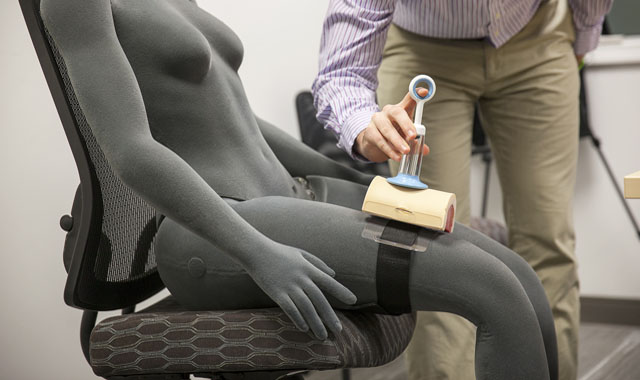Inclusive Design: A Practical Approach

How do you make sure your medical device will meet the needs of your potential users?
In an ideal world, medical device designers would have the time to conduct contextual user research up front, before developing initial design concepts. The reality is that device designers often need to begin concepting before they have the chance to conduct the contextual research.
However, there are ways to jumpstart the process. Inclusive Design offers a framework for medical device designers to guide early concepting decisions. Battelle has taken this practice a step further by combining Inclusive Design practices with existing patient data to inform early concepts.
A Framework for Inclusive Design
Inclusive design means creating products that can be used by people with a wide range of needs and abilities without special accommodations. At its heart, it means looking at the diverse abilities, needs and preferences of the entire user population and making design choices that make the device usable for the broadest range of individuals.
Real-Life Example
You can use the principles of Inclusive Design to generate questions whose answers will inform your early design, even if you are not able to conduct user research before you begin concepting.
Let’s imagine you’d like to design a blood pressure monitor and you want to use the principles of inclusive design to inform your early concepts. Here are the types of questions you want to ask yourself before you begin design:
Equity:
- What needs might people have when they take their blood pressure?
- Do they want to learn the current blood pressure measurements? Maintain a record of measurements?
- Send measurements to themselves or others?
- Share this device while keeping separate records of their own measurements?
Simplicity:
- Can we reduce the task to something as simple as attaching the cuff and hitting a single start button without the need for any other activities, such as calibration?
- How can we help these individuals easily determine whether their measurements are within the normal range?
Flexibility:
- What do we need to keep in mind to ensure that this device can be used by as many types of individuals as is reasonably possible?
- What arm sizes should the cuff be able to accommodate?
Perceptibility:
- What type of display would allow the readings to be seen by individuals who require large text and high contrasts?
- What are all the ways that we might want to communicate with these individuals?
Tolerance:
- How can we help the individual get an accurate measurement even when the cuff is not positioned optimally around the upper arm?
Low Physical Effort:
- What design options would allow an individual to attach the cuff easily and without the assistance of another person?
Appropriate Size & Space:
- Where will the individual be when taking a measurement? Will the monitor need to be easily transported on a daily basis and/or during extended travel?
Combining Inclusive Design with Existing Patient Data
Battelle takes this approach to meeting the challenge of early concept design a step further by combining existing patient data with inclusive design principles. At Battelle, researchers have collected an extensive repository of user data through years of user research.
The process starts by using Inclusive Design to help designers think broadly about the design challenges. Then, relevant information is extracted from the patient database. These approaches are combined to generate initial concepts that that can be used during user research to further explore patients’ needs while simultaneous refining the design. During every interaction with patients, we glean data that we can use to expand our repository.

The Battelle medical device design process.
Inclusion Through Empathy
Inclusive design requires us to listen to the users. Ultimately, it is about empathy: understanding where users are coming from, how different design choices impact them, and how they interact with the device in the real world.
At Battelle, our researchers are expert listeners. We use a variety of methods—including contextual research, usability studies and interviews that are not tied to a specific product design effort—to build our patient data repository and develop empathy for the needs of many different kinds of users. Our research programs give users a voice and help manufacturers understand them as complete individuals.
BATTELLE UPDATES
Receive updates from Battelle for an all-access pass to the incredible work of Battelle researchers.